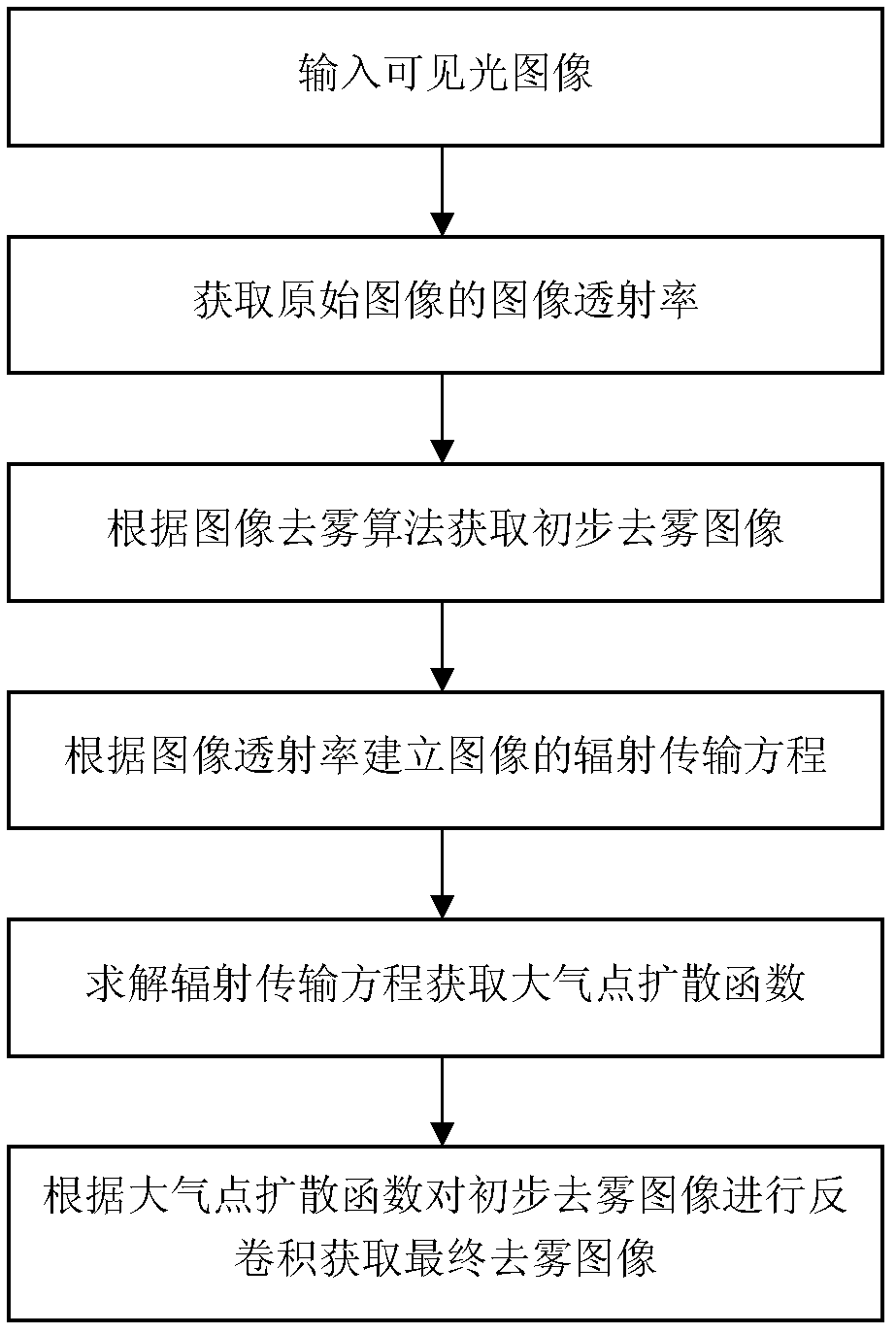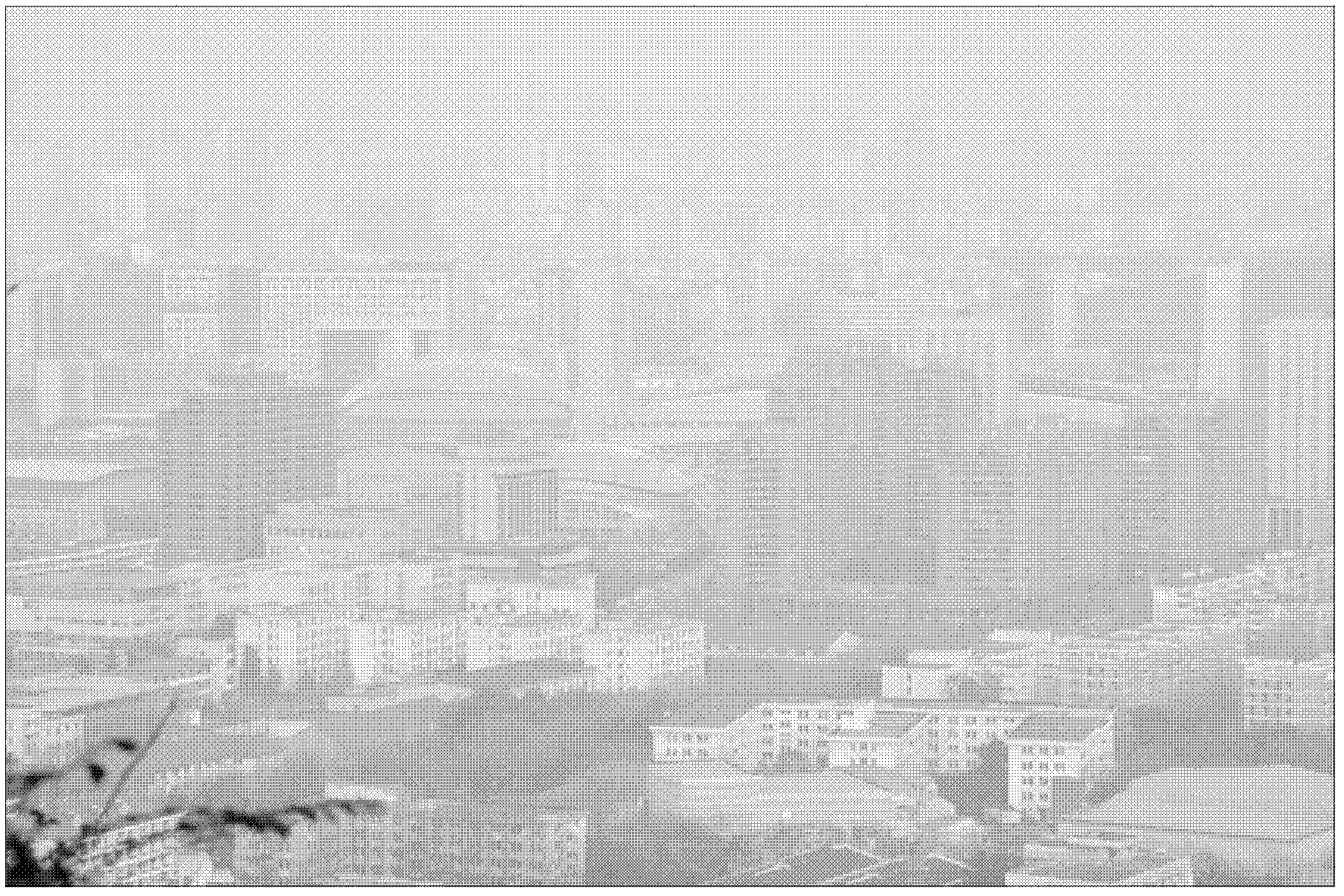Image defogging method facing to atmospheric scattering proximity effect
A proximity effect and atmospheric scattering technology, applied in image enhancement, image data processing, instruments, etc., can solve the problems of insufficient image details, lack of consideration, unsatisfactory image contrast and clarity, etc.
- Summary
- Abstract
- Description
- Claims
- Application Information
AI Technical Summary
Problems solved by technology
Method used
Image
Examples
Embodiment Construction
[0032] like figure 1 As shown, the implementation steps of the image dehazing method for the proximity effect of atmospheric scattering in this embodiment are as follows:
[0033] 1) Obtain the image transmittance of the original image and obtain a preliminary dehazing image of the original image through an image dehazing algorithm;
[0034] 2) Establish the radiation transfer equation of the image according to the image transmittance of the original image;
[0035] 3) Solve the radiative transfer equation to obtain the atmospheric point spread function of the image;
[0036] 4) Perform deconvolution processing on the preliminary dehazed image according to the atmospheric point spread function to obtain the final dehazed image.
[0037] In step 1) of the present invention, any image dehazing algorithm can be used to obtain a preliminary dehazing image of the original image. The prior image dehazing method can better realize the image dehazing, and can improve the image deha...
PUM
 Login to View More
Login to View More Abstract
Description
Claims
Application Information
 Login to View More
Login to View More - R&D
- Intellectual Property
- Life Sciences
- Materials
- Tech Scout
- Unparalleled Data Quality
- Higher Quality Content
- 60% Fewer Hallucinations
Browse by: Latest US Patents, China's latest patents, Technical Efficacy Thesaurus, Application Domain, Technology Topic, Popular Technical Reports.
© 2025 PatSnap. All rights reserved.Legal|Privacy policy|Modern Slavery Act Transparency Statement|Sitemap|About US| Contact US: help@patsnap.com



